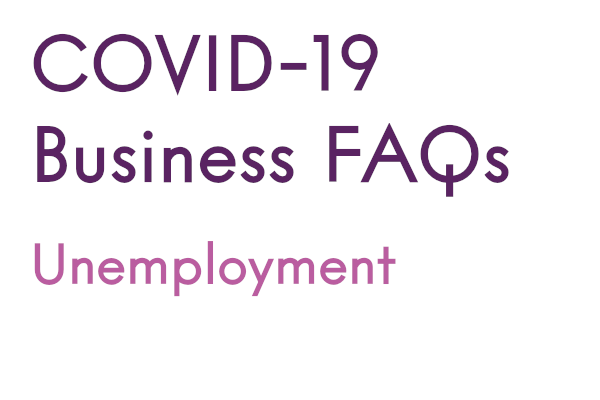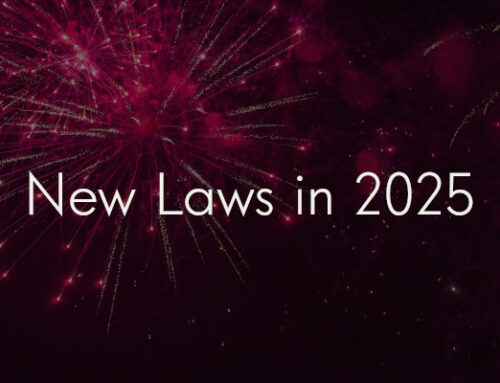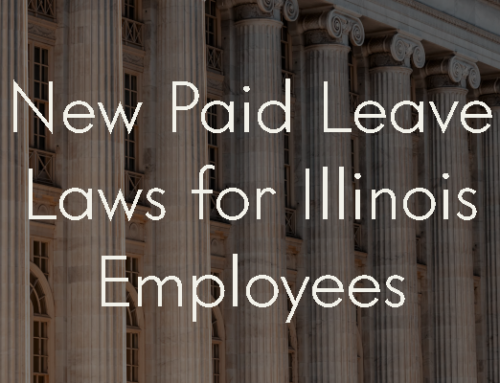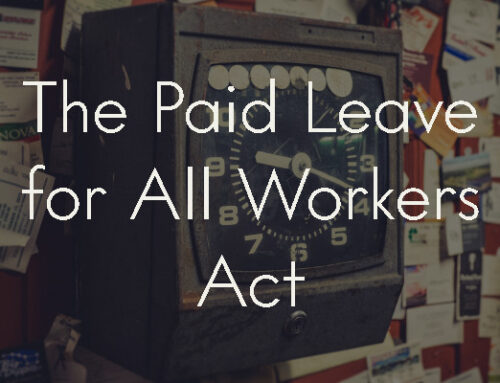Disclaimer: We are not experts in health or policy and make no guarantees as to the accuracy or timeliness of the details on this page. This page is for informational purposes only. See our full COVID-19 disclaimer for more.
For employee-focused information, check out Collecting Unemployment Insurance Benefits during the COVID-19 Crisis, a guest post from Max Barack of the Garfinkel Group.
If your business has hit trouble because of the pandemic and you need guidance, the attorneys at G & G Law have assembled a toolkit of accessible, easy-to-digest information that answers many common questions we’ve received from our clients. You can read more about it and purchase it here.
Last updated March 20th, 2020
One quick note before we jump into answering the commonly asked questions related to unemployment: the Illinois Department of Employment Security (“IDES”), which handles unemployment, has issued emergency rules to handle the COVID-19 pandemic. Like many of you, we searched extensively to figure out how unemployment will work in these situations. Unfortunately, the full text of the emergency rules, as of March 20, 2020, has not been added to the Administrative Code on the Illinois General Assembly government website or made available on the IDES website, and no one else (including news outlets) seems to have found the full text of the rules either. The emergency rules are, however, explained somewhat on the IDES website, so that’s what we’re basing this on.
- Filing for Unemployment Generally
- COVID-19 Emergency Rules
- What Does Filing for Unemployment Give You?
- Can Business Owners File for Unemployment?
- What Happens to Employers When a Former Employee Files for Unemployment?
- Can You Get Unemployment if Your Hours Are Reduced?
Filing for Unemployment Generally
Employees that have been laid off or fired through no fault of their own are typically eligible for unemployment. You can find a handy overview provided by the IDES here.[1] The overview explains:
- Who is eligible for unemployment: Essentially, someone laid off or fired through no fault of their own, who has been continuously working, and is actively looking for a job and ready and able to continue working once they find a new job
- How to register to look for employment (typically required before filing for unemployment, but check out our “COVID-19 Emergency Rules” section below, this may be waived if you were terminated for business closures due to COVID-19)
- How to file for unemployment
- When to file for unemployment
COVID-19 Emergency Rules
The COVID-19 Emergency Rules, as of March 20, 2020, make it easier for employees to be considered “eligible” for unemployment. The big changes:
- Individuals laid off because their employer closed due to COVID-19: These individuals could qualify for benefits as long as they are available/actively seeking work. But interesting note! These individuals do not have to register with the employment service to seek reemployment before applying for benefits. They are considered “actively seeking work” as long as they are prepared to return to work when their employer reopens[2]
- Individuals diagnosed with or caring for someone who is diagnosed with COVID-19: Individuals confined to their homes for these reasons are considered unemployed through no fault of their own. However, they do still need to register with the state employment office (explained in the IDES handout[3]). The individual would be considered able and available for work if there was some work they could perform from home and there is a labor market for that work. (FYI: check out the rules on sick leave explained in this packet, which can also apply to these individuals)[4]
- Individuals Quarantined by Government Order or Advice: These individuals are considered unemployed through no fault of their own. However, they do still need to register with the state employment office (explained in the IDES handout[5]). The individual would be considered able and available for work if there was some work they could perform from home and there is a labor market for that work. (FYI: check out the rules on sick leave explained in this packet, which can also apply to these individuals)[6]
- Individuals Stuck at Home Because Childcare Is Closed: Quick note- typically, these individuals wouldn’t be eligible for unemployment, because they are considered to have left work voluntarily. But good news – the IDES realizes that this isn’t necessarily voluntary with all of the childcare/school closures, so these individuals could be considered unemployed through no fault of their own. However, they do still need to register with the state employment office (explained in the IDES handout[7]). The individual would be considered able and available for work if there was some work they could perform from home and there is a labor market for that work.[8]
What Does Filing for Unemployment Give You?
Once an individual has filed for and been approved for unemployment payments, they will receive an amount based on what they had previously been paid. You can take a look at this benefit table[9] to figure out what that amount would be.
Can Business Owners File for Unemployment?
This is a question the IDES really likes to keep open. We looked at other state’s rules, the Illinois Administrative Code (on the Illinois General Assembly’s website), the IDES website, caselaw research, and general searches for opinions provided by the IDES.
The good news is that there was one opinion[10] issued that stated that business owners that pay themselves as employees (as they do when they are taxed as an S-corporation) need to pay unemployment taxes for themselves. This would make them eligible for benefits, although their “termination” or “layoff” needs to be beyond their control. While that’s likely the case for most businesses right now, be prepared to explain your situation.
The bad news is that business owners that have not been paying themselves as employees haven’t been “employed” and are ineligible for unemployment unless they were recently employed by a third party. We haven’t seen any changes to this in the emergency rules yet.
What Happens to Employers When a Former Employee Files for Unemployment?
Every employer with employees in Illinois needs to pay unemployment taxes. The tax rate varies based on employer size, number of employees claiming unemployment for that employer, etc. These payments then go to the Illinois Department of Employment Security.
When an individual gets terminated/laid off, assuming they meet the requirements for obtaining unemployment, they then can apply for unemployment. The IDES will then determine who the “chargeable” employer is. Typically, it’s the most recent employer, assuming the employee has worked for that employer for thirty days.[11]
If the employer is considered the chargeable employer for that individual, the unemployment payments come out of their tax “account”. This does not mean that the employer pays the individual’s unemployment payments, or that they are responsible for them if the payments exceed the amount in their tax account. It does mean that the employer’s tax rate may go up, so they pay higher taxes to the IDES. Note: as of March 20, 2020, the emergency rules don’t change this.[12] Tax rates will fluctuate for a few reasons, so the amount of increase, if any, is unclear. The good news is that there is a minimum and maximum tax rate. For 2019 the range was 0.475%-6.875%.[13]
Can You Get Unemployment if Your Hours Are Reduced?
Maybe. The amount of unemployment you get is loosely based on your regular hours over in the past year. Right now, your “benefit amount” or the amount of unemployment you receive, is intended to be about 47% of your regular wages (see the IDES benefit table[14]). If your hours are reduced enough that you are making less than your benefit amount, you may be entitled to unemployment to make up the difference.[15]
—
[1] http://www.ides.illinois.gov/IDES%20Forms%20and%20Publications/CLI111L.pdf
[2] https://www2.illinois.gov/ides/Pages/COVID-19-and-Unemployment-Benefits.aspx
[3] http://www.ides.illinois.gov/IDES%20Forms%20and%20Publications/CLI111L.pdf
[4] https://www2.illinois.gov/ides/Pages/COVID-19-and-Unemployment-Benefits.aspx
[5] http://www.ides.illinois.gov/IDES%20Forms%20and%20Publications/CLI111L.pdf
[6] https://www2.illinois.gov/ides/Pages/COVID-19-and-Unemployment-Benefits.aspx
[7] http://www.ides.illinois.gov/IDES%20Forms%20and%20Publications/CLI111L.pdf
[8] https://www2.illinois.gov/ides/Pages/COVID-19-and-Unemployment-Benefits.aspx
[9]https://www2.illinois.gov/ides/IDES%20Forms%20and%20Publications/CLI110L_2020.pdf#search=benefit%20table%202020
[10]https://www2.illinois.gov/ides/Illinois_Small_Business_Advisor/Advisory%20Opinion%20Unemployment%20insurance%20exemption%20for%20LLC%20owner.pdf
[11] 820 ILCS 405/1502.1,http://www.ilga.gov/legislation/ilcs/ilcs3.asp?ActID=2434&ChapterID=68
[12] https://www2.illinois.gov/ides/Pages/COVID-19-and-Unemployment-Benefits.aspx
[13] http://www.ides.illinois.gov/IDES%20Forms%20and%20Publications/EA-50_2019.pdf
[14]https://www2.illinois.gov/ides/IDES%20Forms%20and%20Publications/CLI110L_2020.pdf#search=benefit%20table%202020
[15] 820 ILCS 405/239, ilga.gov/legislation/ilcs/ilcs3.asp?ActID=2434&ChapterID=68





